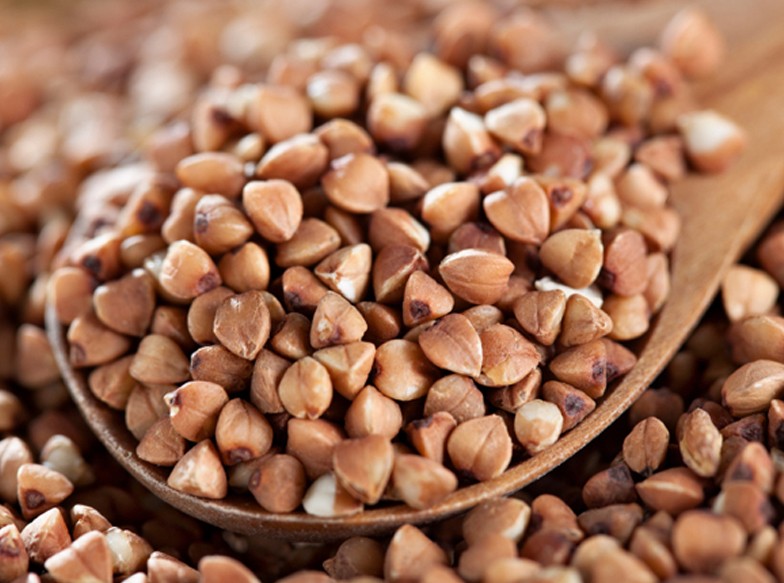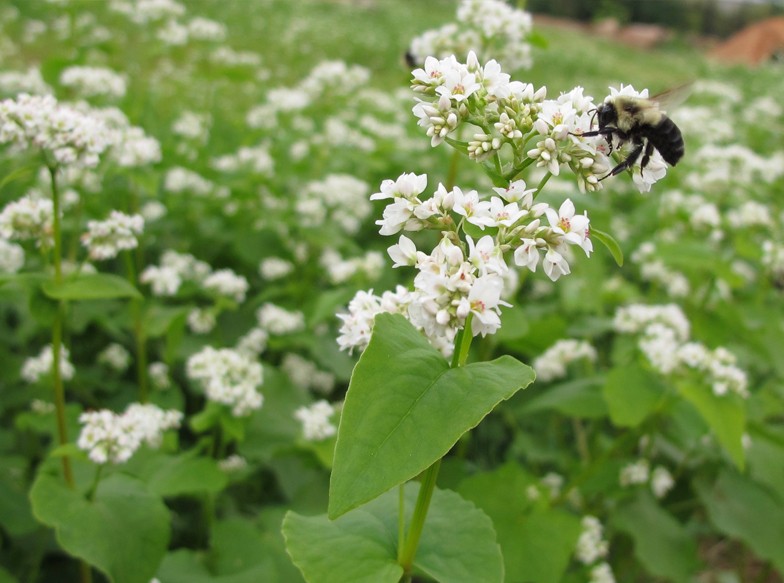Buckwheat
Buckwheat is an annual herb plant with a maturity period of 75 days and two seasons in the north. Stems erect, 30-90 cm tall, upper branched, green or red, with longitudinal ribs, glabrous or with papillae along longitudinal ribs on one side. Leaves triangular or ovate-triangular, 2.5-7 cm long, 2-5 cm wide, apex acuminate, base heart-shaped, with papillae on both sides along the veins.
Buckwheat likes a cool and humid climate, is not resistant to high temperature, drought, and strong wind, is afraid of frost, likes sunshine, and needs more water.
Buckwheat is sweet, slightly acidic and cold. Selectively targeting the slpeen, stomach and colon energy channel(we call jingluo is energy channel here).
Buckwheat can strengthen SS(Stomach & Spleen) system, help digestion, smooth LG(Liver & Gallbladder) energy flow, detox your colon, and close the wounds. Backwheat can be used for gastrointestinal stagnation, diarrhea, dysentery, colon cancer, leukorrhagia, spontaneous sweating, night sweats, herpes, erysipelas, carbuncle on the back, scrofula and burn.
Buckwheat contains salicylic acid, 4-hydroxybenzylamine, N-salicylidenesalicylamine; quercetin, quercitroside, hyperoside, and rutin; O and P-β-D-glucopyranosyloxy benayl amine, oleic acid, linoleic acid, and carotenoids and chlorophyll. Buckwheat also contains three trypsin inhibitors TI1, TI2 and TI4.
Application of Buckwheat:
- Oral administration: made into pills, powder, or pasta.
- External application: appropriate amount, ground without mixing or adjusted for application.
- Buckwheat protein is rich in lysine, iron, manganese, zinc and other trace elements are richer than ordinary grains, and rich in dietary fiber, which has good nutritional and health effects;
- Buckwheat is rich in vitamin E and soluble dietary fiber, and also contains niacin and rutin (rutin). Rutin can lower blood fat and cholesterol, soften blood vessels, protect eyesight and prevent cerebral hemorrhage;
- The niacin contained in buckwheat can promote the metabolism of the body, enhance the detoxification ability, and also have the effect of dilating small blood vessels and lowering blood cholesterol;
- Buckwheat is rich in magnesium, which can promote the dissolution of human fibrin, dilate blood vessels, inhibit the formation of blood clots, have anti-thrombotic effects, and help lower serum cholesterol;
- Some flavonoids in buckwheat also have antibacterial, anti-inflammatory, cough-relieving, asthma-relieving, and expectorant effects. Therefore, buckwheat is also known as "anti-inflammatory food". In addition, these ingredients also have the effect of lowering blood sugar;
- Buckwheat has the function of cleaning up intestinal waste, so it is called "cleaning grass" among the people;
- While eating refined grains, regular consumption of buckwheat is good for the body;
Pharmaceutical Study:
- Antihypertensive effect: Feed rats with buckwheat flour for 4 weeks, and their blood pressure decreased slightly. This product has a strong inhibitory effect on angiotensin-converting enzyme (ACE), and its active ingredient may be a heat-resistant low-molecular substance. A tripeptide extracted from the core part of buckwheat seeds has an IC50 of ACE of 12.7 μmol/L, and experiments have shown that it has antihypertensive effects on spontaneously hypertensive rats (SHR).
- Effects on blood lipids and blood sugar: Volunteers ate buckwheat flour for 4 weeks, which significantly increased the ratio of high-density lipoprotein-cholesterol/total cholesterol, very low-density lipoprotein-cholesterol, very low-density lipoprotein-triglyceride, low-density lipoprotein Protein-triacylglycerol and high-density lipoprotein-triacylglycerol were significantly reduced, and blood sugar was lowered, and oral glucose tolerance was improved. Rats fed with buckwheat flour for 4 weeks also had improved glucose tolerance and accelerated insulin utilization 1 hour after glucose load. After taking buckwheat extract for 12 weeks in high-fat diet rabbits, it can slightly reduce the concentration of malondialdehyde (MDA) in blood, but significantly increase the content of ascorbic acid free radical in liver, accompanied by the level of β-lipoprotein in blood and cholesterol and With the reduction of triacylglycerol concentration, testosterone phenylacetate in blood also increases, and the effect is far stronger than that of rutin.
- Other effects: There are 3 kinds of trypsin inhibitors (TI) extracted from dried buckwheat seeds (TI1, TI2 and TI4), except for the inhibitory effect on trypsin, TI1 and TI2. There is still a certain inhibitory effect on chymotrypsin. In addition, these TIs also inhibited the spore germination and mycelium growth of Alternaria alternata. The water extract of buckwheat pollen has an anti-iron deficiency anemia effect similar to that of ferrous sulfate. Rats that drank the water extract for 35 days grew well and showed no damage to major organs.
Backwheat is suitable for majority of the people
- It is suitable for people with loss of appetite, poor diet, stagnant stomach and chronic diarrhea; at the same time, it is suitable for people with yellow sweat, summer Sha syndrome, and diabetics;
- People with spleen and stomach deficiency, poor digestion, frequent diarrhea, and people with sensitive constitutions should not eat it.
- Buckwheat contains a lot of protein and other allergenic substances, so it can cause or aggravate the allergic reaction of the allergic person, so people with sensitive constitutions should eat it carefully; buckwheat contains red fluorescent pigment, which can cause photosensitivity after eating. Inflammation of the mucous membranes of the ear, nose, throat, bronchus, and heel, and irritation of the intestinal tract and urinary tract.
Cautions:
- About 50 grams per meal; it is not advisable to eat too much, it is difficult to digest and dizzy.
- It is not advisable to eat in spring, it will trigger cold toxin if you eat it in spring.
- If you have cold stomach or fire energy low in the body, it is better you not take it.
- It can not be taken together with "Ping Wei San" or the foods which contain alum.
In Person With Heshoutang Members
With Heshoutang Online Members
Fill Out the Questionnaire by yourself
When you subscribe to the blog, we will send you an e-mail when there are new updates on the site so you wouldn't miss them.
















Comments